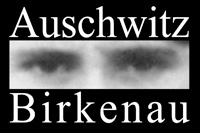




Youths
Young people aged 15 to 18 arrived in Auschwitz together with adults as early as the first transports of Polish political prisoners. In the fall of 1940, there were about 300 boys in the camp. A so‑called bricklaying school was set up for them where they received vocational training and learned basic German, German songs and drill. Masonry courses were also held in subsequent years in both Auschwitz I and Birkenau. There were usually several hundred each of young Jews, Poles, Roma, and Russians enrolled.
As it was the case with adult prisoners, the boys had to perform heavy labor exceeding their physical abilities. Some also died in the camp because of the hard living conditions, sickness, and executions. Girls as well, together with adult women, were forced to do agricultural, construction, and earthmoving work that often exceeded their strength. Small numbers of youths, known as “Pipels,” were forced to act as servants to prisoner functionaries. Their duties included cleaning, washing, and cooking for the functionaries. Sometimes they were also forced to render sexual services. There were situations where youths held the posts of Kapo or block elder. Those among them who had lost their moral bearings exploited these positions to terrorize other prisoners.
The majority of young prisoners of both sexes, though, were at risk of beating and harassment by SS men and prisoner functionaries, and received the same punishments as adults.
Over 200 youths were liberated at Auschwitz in January 1945.
